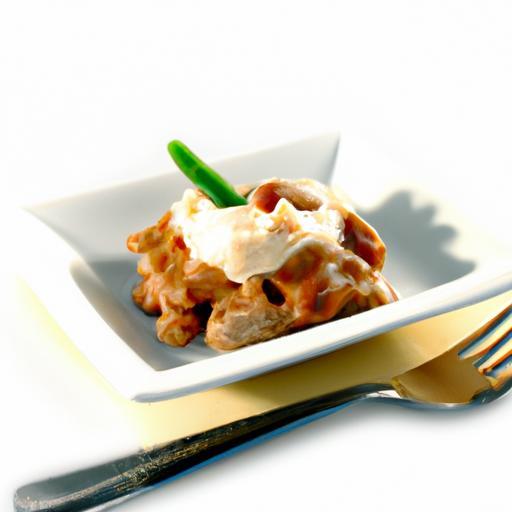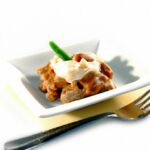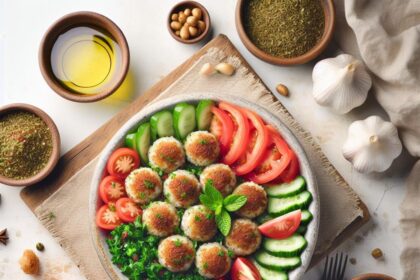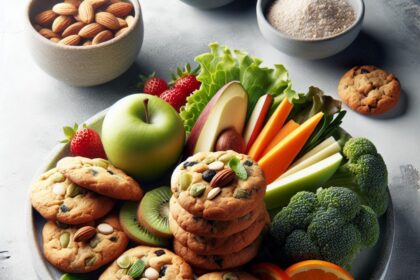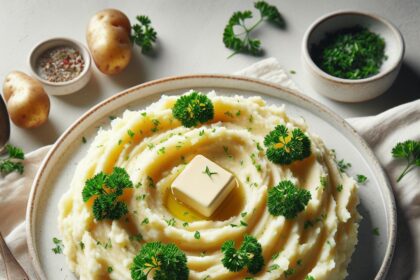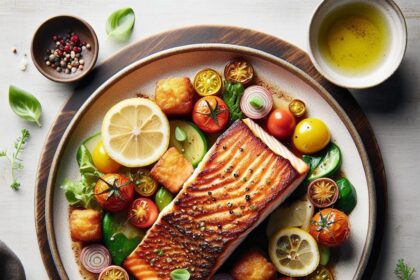When it comes to freezer meals, the decision to thaw before cooking can feel like a culinary crossroads. Should you patiently defrost your dish to perfection, or is there a faster, foolproof way to go straight from freezer to fork? “To Thaw or Not? Mastering the Art of Cooking Freezer Meals” dives into the science, tips, and tricks behind preparing freezer-friendly dishes with ease and confidence. Whether you’re a busy parent, a meal-prep enthusiast, or just someone looking to save time without sacrificing flavor, this guide will help you unlock the full potential of your frozen feasts-turning simple convenience into kitchen mastery.
To thaw or not? Mastering the art of cooking freezer meals begins with understanding how thawing influences both flavor and texture, empowering you to deliver consistently delicious results every time. The science behind this process unveils the subtle shifts in moisture retention and protein structure, which directly affect taste and juiciness. Choosing the best warming technique depends on the meal’s ingredients and your lifestyle, ensuring each dish shines whether thawed or cooked frozen.
Prep and Cook Time
- Preparation: 10-15 minutes (not including thawing time)
- Cook Time: 30-45 minutes
Yield
- Serves 4 generous portions
Difficulty Level
- Easy to Medium – adaptable based on chosen method
Ingredients
- 4 frozen chicken breasts (skinless, boneless)
- 1 cup chicken broth (low sodium)
- 1 tbsp olive oil
- 2 cloves garlic, minced
- 1 tsp dried thyme
- 1 tsp smoked paprika
- Salt and freshly ground black pepper to taste
- Fresh parsley (optional, chopped for garnish)
Instructions
- Choose your thawing method wisely. For delicate proteins like chicken breasts, slow thaw in the refrigerator overnight to maintain juiciness. For those pressed for time, use the cold water method: seal in a ziplock bag and submerge in cold water, changing every 30 minutes until fully thawed.
- Preheat your oven to 375°F (190°C). This moderate temperature allows even cooking whether starting from frozen or thawed.
- Pat chicken dry with paper towels. Moisture is the enemy of a good sear and flavor development.
- Heat olive oil in an oven-safe skillet over medium heat. Add garlic and sauté until fragrant, about 1 minute.
- Season chicken breasts generously with salt, pepper, thyme, and smoked paprika. If cooking frozen breasts directly, add 5 minutes to cooking time.
- Sear chicken breasts for 3-4 minutes per side until lightly golden. Don’t fret if it’s not fully cooked; it will finish in the oven.
- Pour chicken broth into the skillet, then transfer skillet to preheated oven. Bake uncovered for 20-25 minutes or until internal temperature reaches 165°F (74°C).
- Remove from oven, loosely cover with foil, and let rest for 5 minutes. This step allows juices to redistribute, preserving flavor and moisture.
Tips for Success
- Freezer meals with dense sauces like casseroles thrive with slow thawing to avoid separation and texture loss.
- Cooking from frozen is safe when adjusting cook times; just be sure to verify doneness with a thermometer to avoid undercooking.
- For optimal flavor retention, avoid microwaving to thaw, as it often causes uneven warming and mushy spots.
- Use broth or flavorful liquids to keep meals moist during oven cooking-water alone can dry out proteins quickly.
- Make-ahead tip: Flash-freeze components separately to maintain peak texture on reheating.
Serving Suggestions
Plate these juicy chicken breasts alongside a vibrant quinoa salad or roasted seasonal root vegetables. Garnish with freshly chopped parsley and a lemon wedge to accentuate the herbaceous spices and enhance bright notes.
This dish beautifully showcases how applying the right thawing and cooking methods can transform a freezer meal into a gourmet experience, perfect for any busy weeknight craving.

| Nutrient | Per Serving |
|---|---|
| Calories | 290 kcal |
| Protein | 43 g |
| Carbohydrates | 2 g |
| Fat | 8 g |
Explore more freezer-friendly, no-fuss meals in our complete guide here. For in-depth thawing safety guidelines, visit the USDA’s official site.
Q&A
Q&A: To Thaw or Not? Mastering the Art of Cooking Freezer Meals
Q1: Why do some freezer meals need to be thawed before cooking, while others can be cooked frozen?
A: It all comes down to timing and evenness of cooking. Thawing allows your meal to heat through more uniformly, reducing the risk of overcooked edges and a cold center. However, some meals-particularly casseroles, lasagnas, and soups-are designed to withstand direct cooking from frozen by adjusting the time and temperature, ensuring they cook all the way through without a hitch.
Q2: How can I tell if a frozen meal is safe to cook without thawing?
A: Check the packaging or recipe instructions first-they usually offer the best advice. Meals that contain raw meat generally benefit from thawing first, to ensure they reach safe internal temperatures evenly. Ready-to-bake or pre-cooked dishes tend to be more forgiving and often can go straight from freezer to oven.
Q3: What’s the best method for thawing freezer meals?
A: The safest route is to thaw your meal slowly in the refrigerator for 24 hours. This keeps it out of the danger zone (40°F-140°F) where bacteria thrive. If you’re short on time, defrosting in cold water or using the microwave’s defrost setting works, but you’ll want to cook the meal immediately afterward to keep it safe.
Q4: Will cooking a meal from frozen change how it tastes or its texture?
A: Sometimes. Cooking from frozen can require longer cook times, which might affect texture-meats could be slightly less tender, and veggies softer. However, adjusting cooking times and covering dishes can help maintain moisture and flavor. The key is patience and a little culinary intuition!
Q5: Are there any freezer meals that shouldn’t be cooked from frozen?
A: Absolutely-meals with raw proteins like chicken breasts or thick cuts of pork or beef often need to thaw first. Cooking these from frozen risks uneven cooking, which can leave parts undercooked and unsafe to eat. Also, complex recipes with layered or delicate textures may not fare well going straight into the oven.
Q6: Can I refreeze a meal once it’s been thawed?
A: Generally, it’s best not to refreeze thawed meals unless they’ve been cooked first. Thawing causes moisture loss and potential bacterial growth, so refreezing without cooking can degrade quality and safety. If you cook the meal after thawing, leftovers can be frozen again with minimal issues.
Q7: Any tips for seasoning freezer meals before cooking?
A: Since freezing can sometimes dull flavors, don’t be shy about adding a pinch more seasoning once your meal is near ready. Fresh herbs, a squeeze of lemon, or a sprinkle of finishing salt can revive and brighten the dish after thawing or cooking from frozen.
Q8: How do I master the timing when cooking meals from frozen?
A: Plan for about 1.5 times the usual cook time when going straight from freezer to oven. Use a food thermometer to check doneness-aim for at least 165°F (74°C) inside for safety with meat dishes. Cover dishes loosely with foil at first, uncovering near the end, to prevent over-browning.
Mastering freezer meals is both an art and a science-embracing the thaw or tackling the frozen head-on can save you time without sacrificing flavor or safety. So, whether you’re defrosting delicately or diving in frozen, your freezer meals can be a delicious, stress-free delight!
Final Thoughts
As the freezer door closes on another meal stocked for convenience, the question remains: to thaw or not to thaw? Mastering this simple yet crucial step can transform your freezer meals from mere leftovers into culinary delights that save time without sacrificing flavor or texture. Whether you choose the slow, patient thaw or the daring direct-from-frozen approach, understanding the science and art behind it empowers you to make the best choice every time. So next time you stand before your frosty feast, remember-cooking freezer meals is not just about convenience; it’s about crafting comfort, one perfectly thawed bite at a time.
